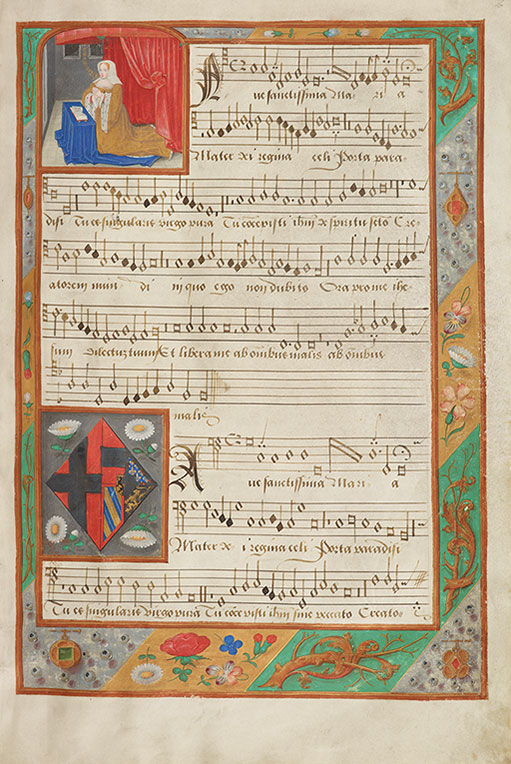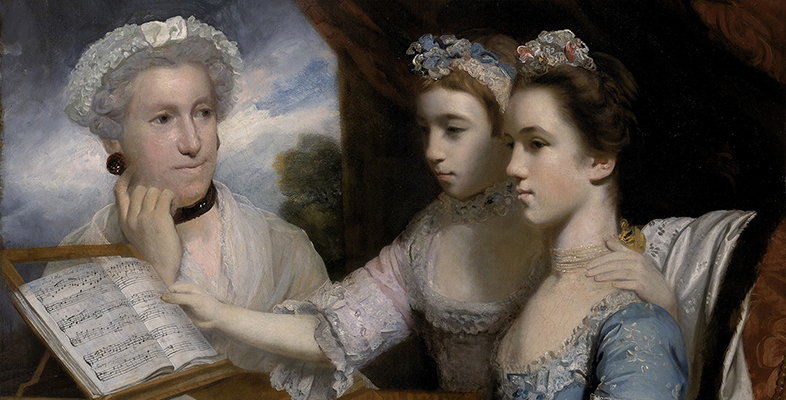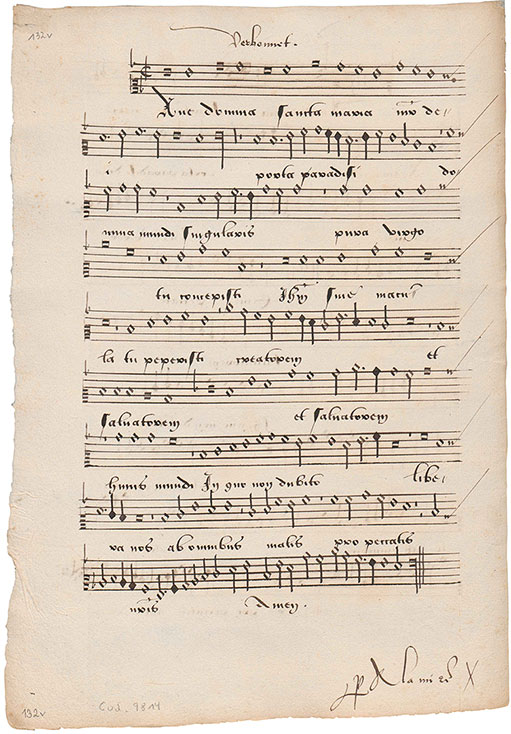2.2 Two manuscripts from the Alamire workshop
The first manuscript (Brussels, Bibliothèque Royale Ms. 228) is a large chansonnier (i.e. a volume containing primarily settings of French lyric poetry – chansons) created between 1516 and 1523 and comprising seventy-three parchment leaves of the dimensions 36.5 × 26 cm. In addition to thirty-nine chansons, the book presents one Flemish song, seven Latin sacred songs (‘motets’), seven songs connecting French and Latin texts, and three secular Latin works, all set for three or more voices (Picker, 1999, pp. 69–70).
The second manuscript (Vienna, Österreichische Nationalbibliothek, Handschriftensammlung, Ms. 9814) is estimated to date from 1519–25 and was later owned by Raimund Fugger the Elder (1489–1535), a wealthy merchant of Augsburg, Germany. It consists of twenty-one individual paper folios of the dimensions 29–29.9 × 20.2–21.7 cm, each presenting a voice part.
Through close study of the script and format of these manuscripts it has been possible to establish that the second of these manuscripts was copied by Alamire himself (notice his signature on the bottom right-hand corner of a page of the manuscript shown in Figure 4) while the first was by another scribe of Alamire’s circle at the Netherlands court (Kellman, 1999, p. 146).
Activity 2
To begin with, listen to Track 1 [Tip: hold Ctrl and click a link to open it in a new tab. (Hide tip)] to gain a sense of the kind of music contained in the manuscripts. This track is an extract from the first piece presented in Brussels, Bibliothèque Royale Ms. 228, Ave sanctissima Maria, an anonymous motet for six voices, suggested to be by the composer Pierre de la Rue (c.1452–1518) (you will learn more about La Rue’s work later on). You can see the tenor and bass parts of the piece, as presented in the manuscript, in Figure 3.
Activity 3
Now compare the images in Figures 3 and 4 of pages selected from each manuscript. How do these differ in their appearances? Are they decorated or do they just present the music? What might their appearances reveal about the status of their owners? Do they look valuable or are they of a simpler format and perhaps more functional?

Discussion
The first manuscript is beautifully decorated with colourful miniatures, an intricate border and clear notation, whereas the second has a simpler format, although the stave is still very clear. To me, their appearances indicate that the first is perhaps more valuable and owned by somebody of high status, whereas the second, being less ornate, is probably not as prestigious.
While the simple appearance of the second manuscript provides little information about its intended owner, the illustrations in the first manuscript reveal far more about its history. In the top left corner of folio 2r we see a portrait of Margaret of Austria, sumptuously dressed in gold and ermine but still wearing a widow’s hood (her second husband had died in 1504). Margaret is painted here in a devout pose, saying the prayer ‘Memento mei’ (‘Remember me’). Beneath this, her coat of arms can be seen surrounded by daisies, which together with pearls – both ‘marguerites’ in Old French – feature throughout the beautifully decorated borders of the manuscript (Picker, 1965, p. 2). These illustrations therefore indicate that the manuscript has strong links with Margaret’s court. You will now look at the contents of the manuscript to see if these can provide any more information about its origins.

